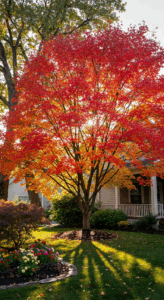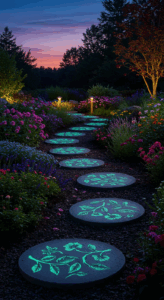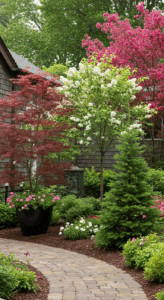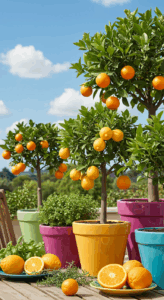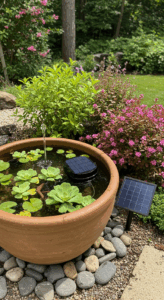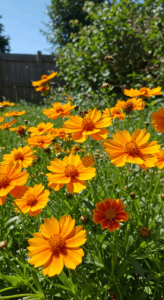1. Embracing Nature: The Allure of Rustic Garden Design
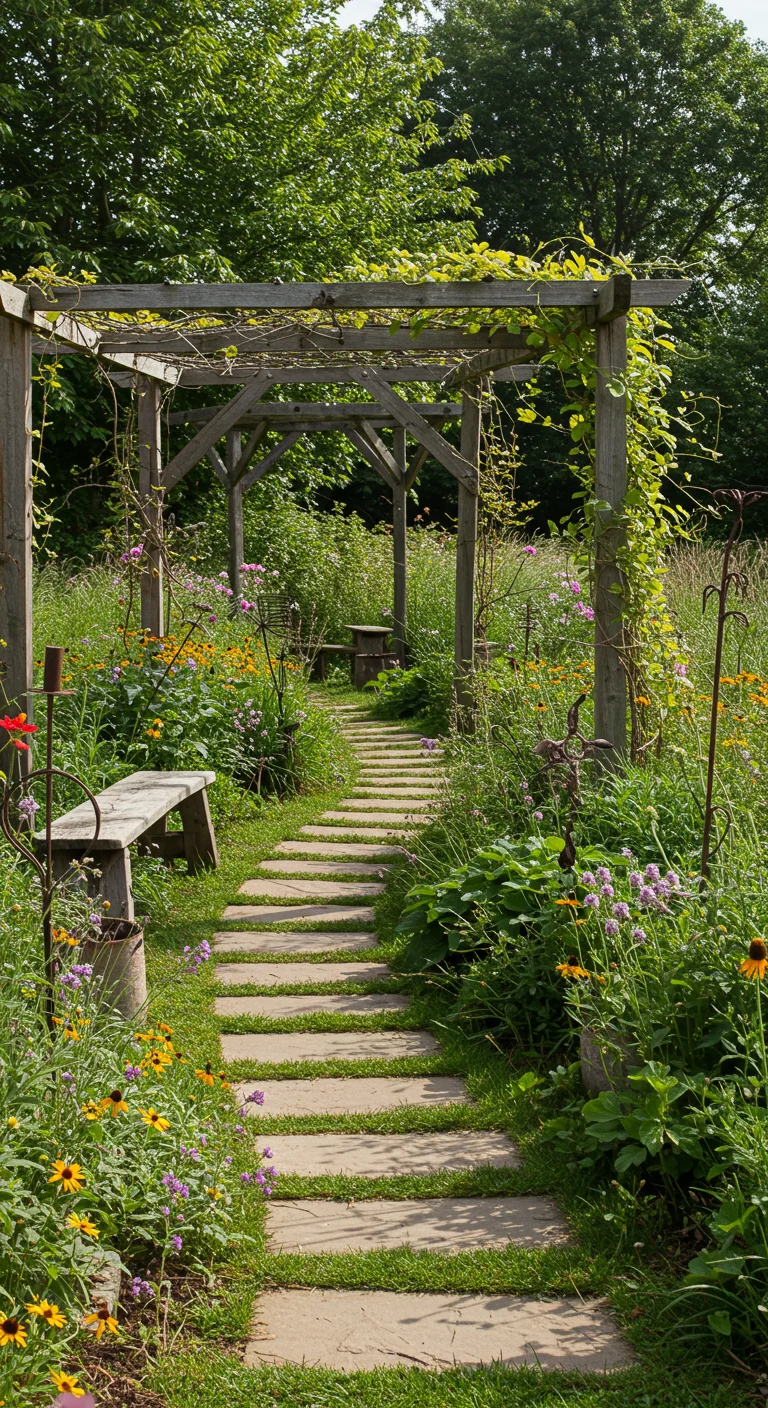
Embracing nature through rustic garden design creates a harmonious blend between the built environment and the natural world. This design ethos celebrates organic materials, such as reclaimed wood, stone, and metals, which evoke a sense of authenticity and warmth. Incorporating native plants and wildflowers not only enhances biodiversity but also creates a low-maintenance landscape that thrives in its environment. Pathways made from natural stones or rustic pavers can guide visitors through lush foliage, while handmade garden features, like wooden trellises or wrought iron sculptures, add character and charm. By embracing the imperfections of nature, rustic gardens invite relaxation and connection, making them a serene retreat from the hustle and bustle of urban life.
2. Weathered Wood: Fences that Tell a Story
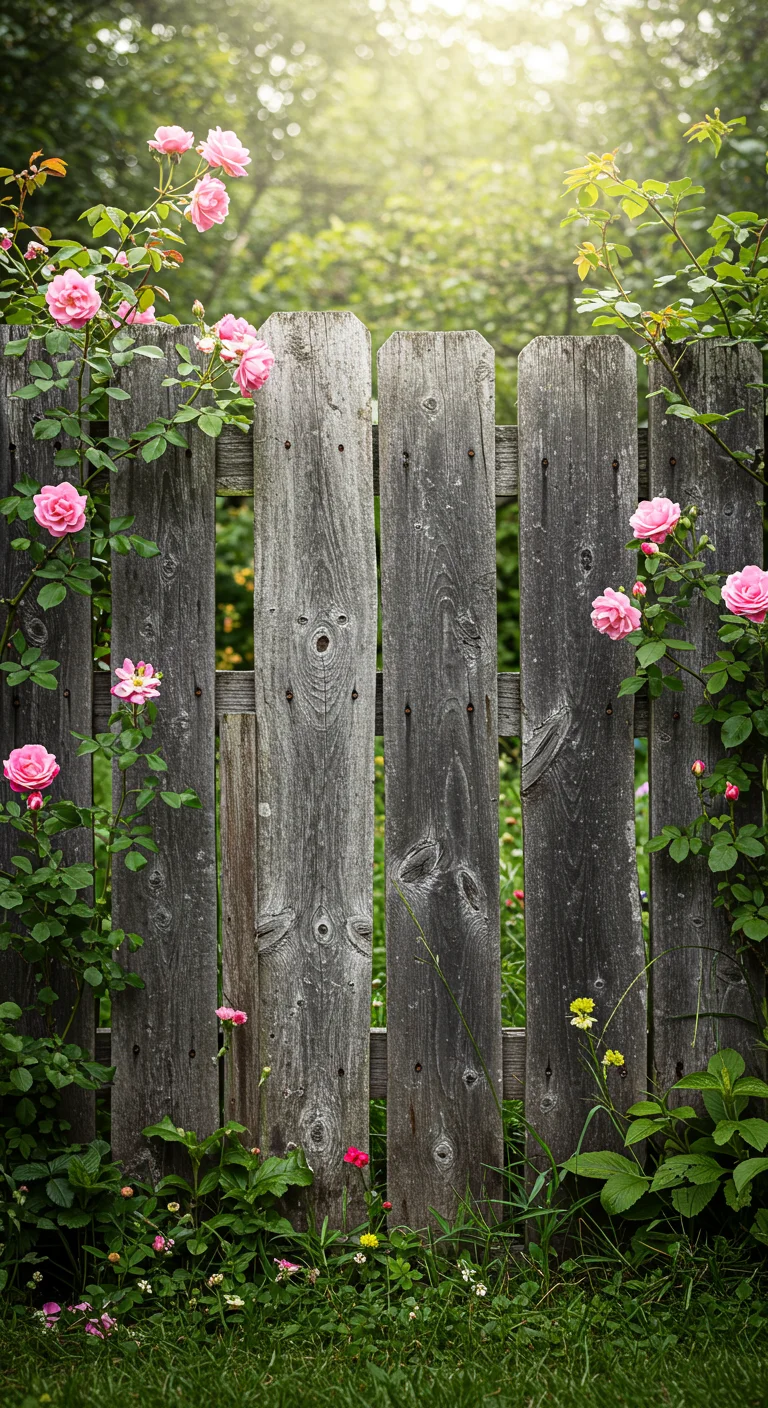
Weathered wood fences are not just functional; they are narratives of nature’s resilience and the passage of time. Each crack and weathered plank tells a unique story, adding character to any rustic garden design. To incorporate a weathered wood fence into your garden, consider using reclaimed wood for an eco-friendly option that enhances the vintage vibe. These fences can serve as a backdrop for climbing plants, such as vines and roses, which will create a beautiful contrast against the aged wood. Additionally, weathered wood can be painted or treated with natural oils to enhance durability while maintaining its rustic charm. By embracing this organic material, you’re not only creating a beautiful garden boundary but also fostering a sustainable approach to landscaping that honors the beauty of imperfection.
3. Stone Pathways: The Art of Natural Walkways
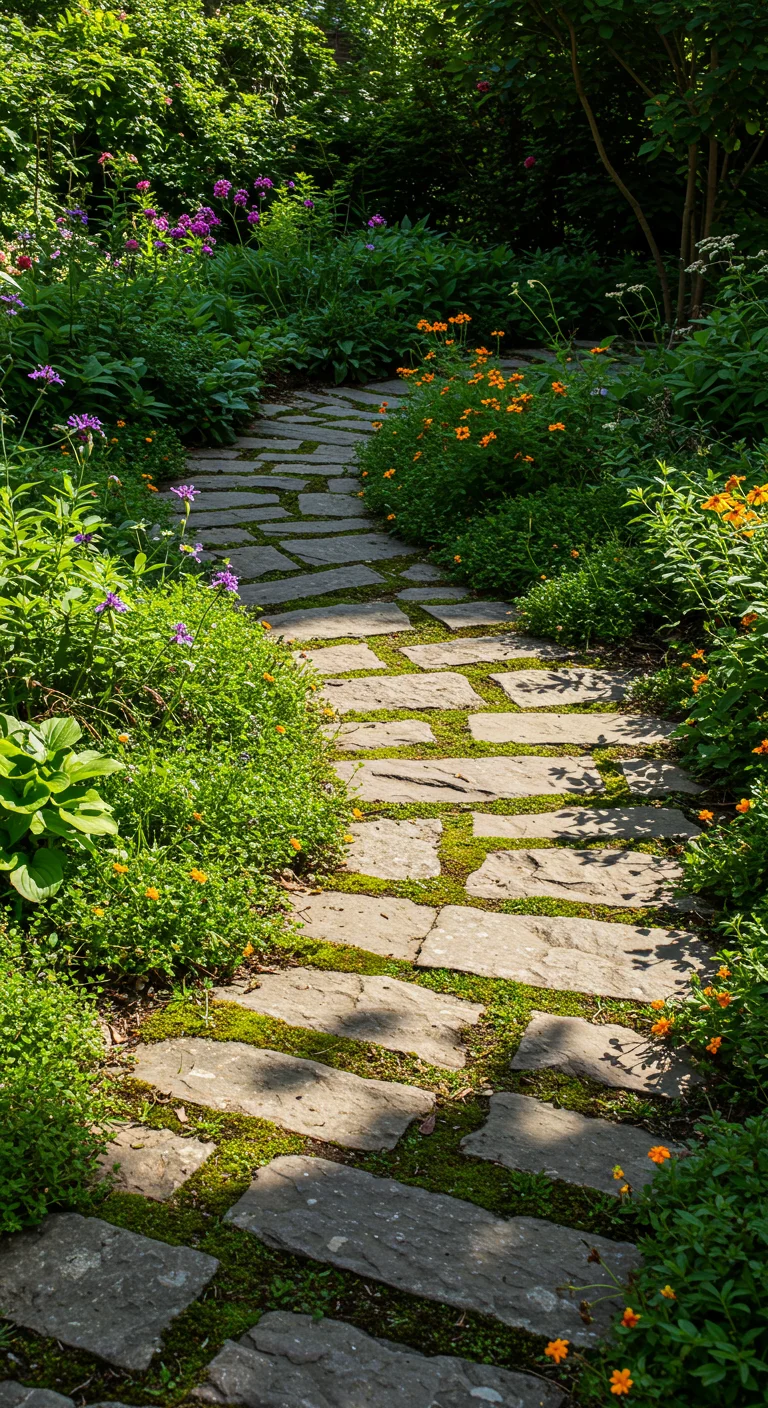
Stone pathways are an exquisite element in rustic garden designs, seamlessly blending nature with structure. These walkways not only provide a practical means of navigating through your garden but also enhance the aesthetic appeal by incorporating natural materials. When designing your stone pathway, consider using irregularly shaped stones to create an organic, unrefined feel that complements surrounding flora. A variety of sizes and textures can add depth and interest, while moss or creeping plants can fill the gaps, creating a soft, inviting look. Ensure the stones are securely set in a stable base to prevent shifting and maintain safety. Additionally, consider the path’s layout; meandering paths can evoke a sense of exploration, making your garden feel more expansive and enchanting.
4. Vintage Furniture: Furniture That Complements the Outdoors
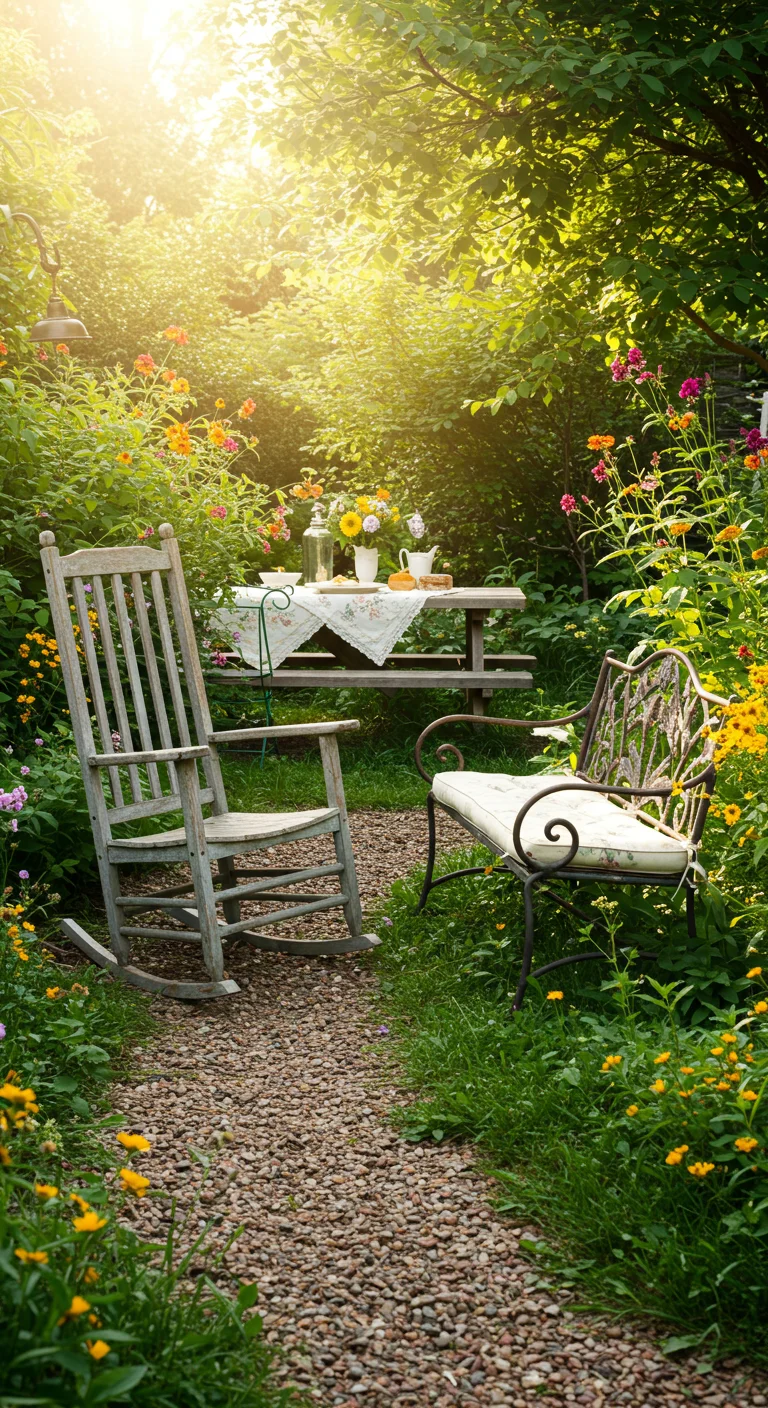
Vintage furniture adds a timeless charm to rustic garden designs, creating a seamless blend between indoor comfort and outdoor beauty. Look for pieces made from weathered wood or wrought iron, such as rocking chairs, picnic tables, or ornate benches that invite relaxation and conversation. Distressed finishes and soft, earthy colors complement the natural surroundings, while cushions in floral or plaid patterns can enhance comfort and style. Incorporating vintage furniture not only provides practical seating and dining options but also transforms your garden into a cozy retreat. To protect these pieces from the elements, consider using outdoor fabric treatments and seasonal storage solutions. This way, you can enjoy the aesthetic appeal without compromising the longevity of your furniture.
5. Wildflower Wonders: Cultivating a Natural Bloom
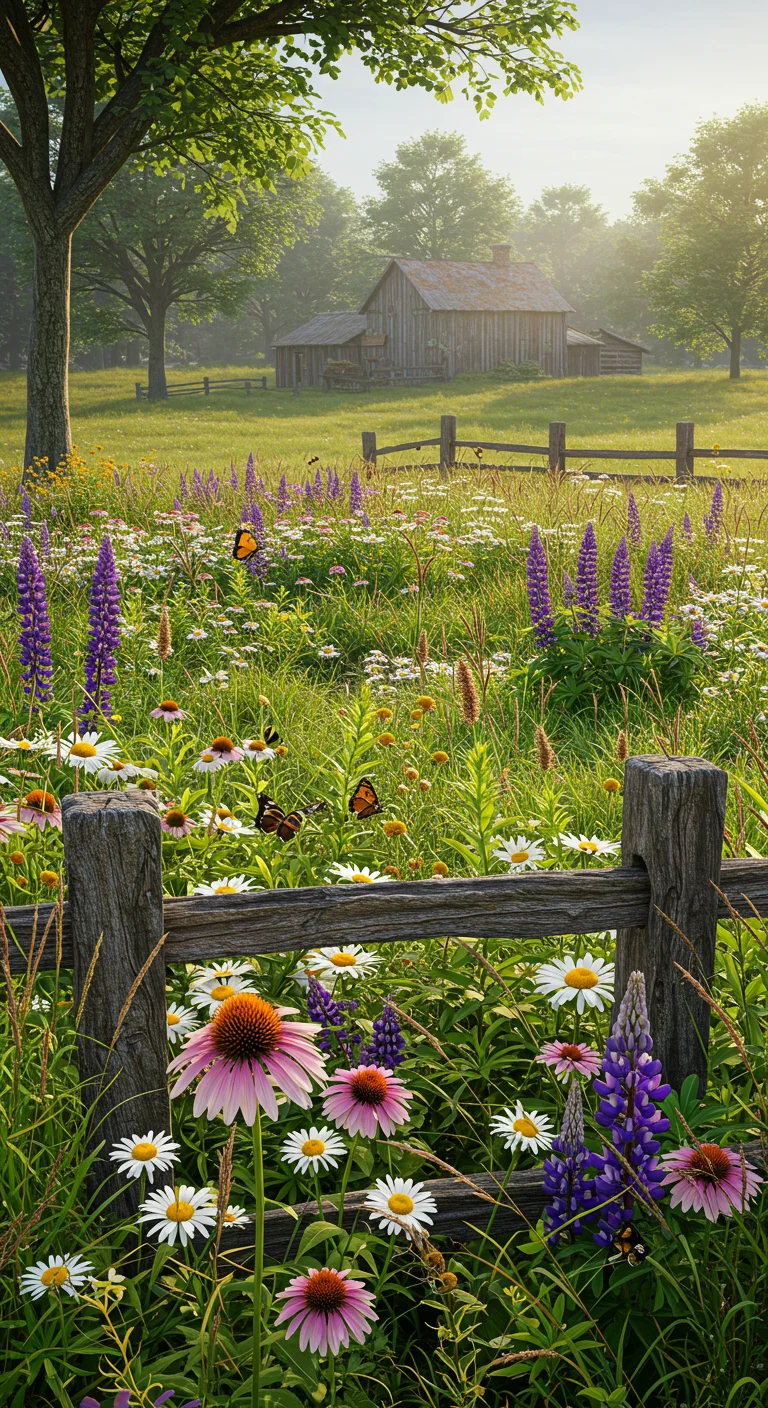
Creating a wildflower garden is a delightful way to cultivate a natural bloom that attracts pollinators and enhances the rustic charm of your space. Begin by selecting native wildflower seeds that are well-suited for your local climate and soil conditions; this ensures a vibrant display throughout the growing season. Prepare the soil by loosening it and removing any weeds, then scatter the seeds and lightly rake them in. Water the area gently and avoid overwatering to prevent seed washout. Consider adding a mix of perennials and annuals for a prolonged blooming period, and group flowers in clusters for maximum visual impact. With minimal maintenance, your wildflower garden can flourish into a breathtaking, eco-friendly haven that showcases nature’s beauty while supporting local wildlife.
6. Raised Beds: Gardening with a Rustic Touch
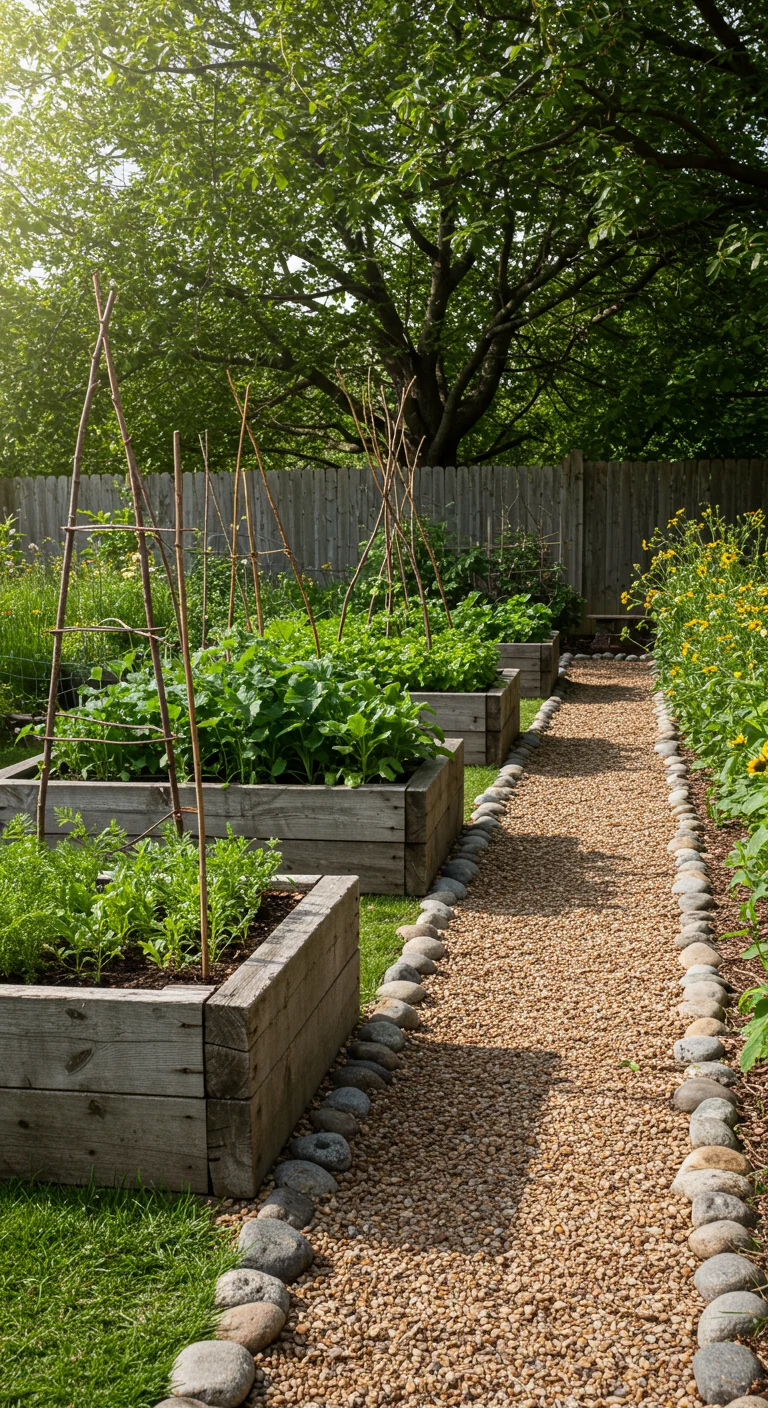
Raised beds offer an excellent way to bring a rustic touch to your garden while enhancing its functionality. Constructed from natural materials such as reclaimed wood, stone, or even corrugated metal, these beds not only provide a charming aesthetic but also create a more manageable growing environment. By elevating the soil, raised beds improve drainage, reduce soil compaction, and allow for better root growth, making them ideal for vegetables, herbs, and flowers. To further enhance their rustic appeal, consider adding trellises made from twigs or branches, or planting alongside pathways made of gravel or stepping stones. This design not only maximizes space but also invites a natural, earthy vibe into your outdoor space, making gardening more enjoyable and accessible for all ages.
7. Water Features: The Soothing Sound of Nature
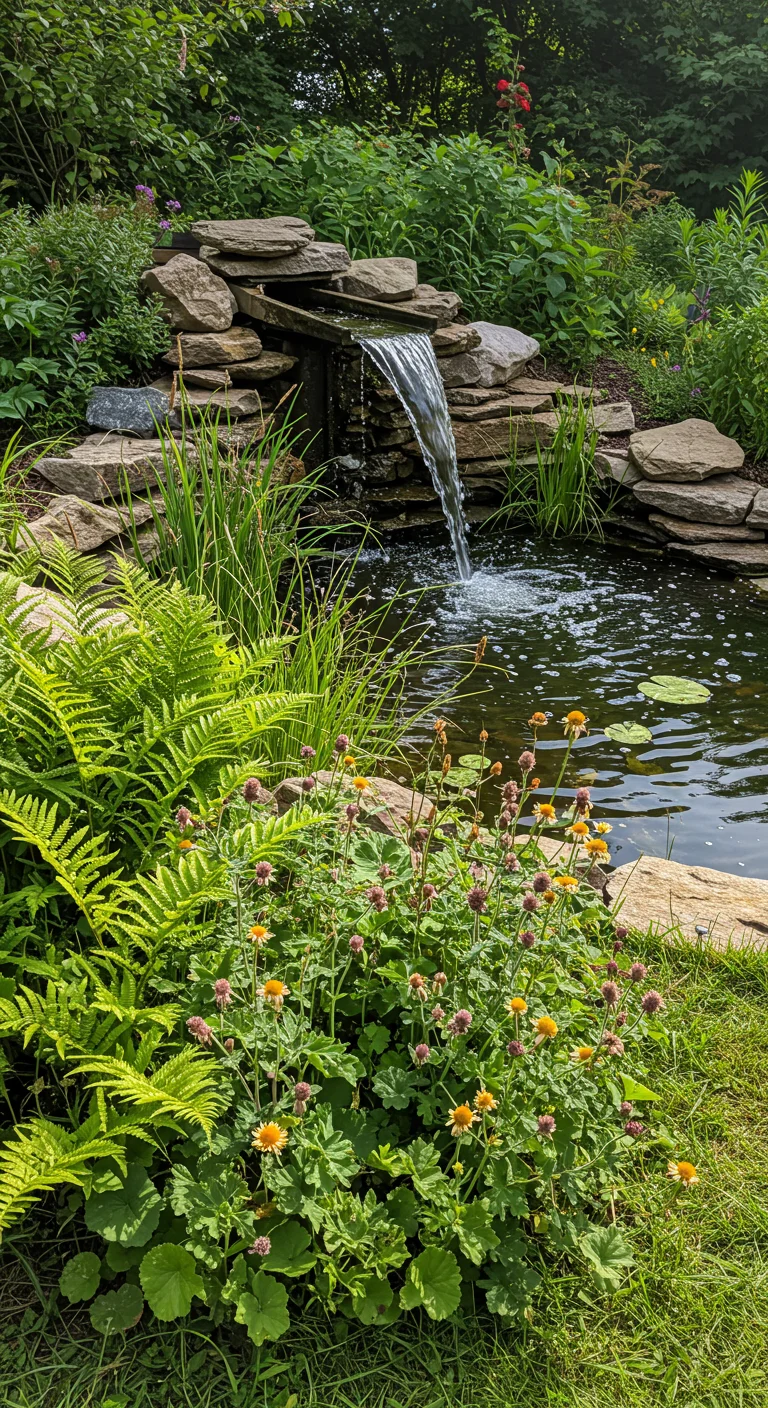
Incorporating water features into your rustic garden design can create a tranquil atmosphere and enhance the natural beauty of your space. Consider options such as small ponds, bubbling brooks, or even a simple water fountain to add the soothing sound of flowing water. These features not only attract birds and butterflies, enriching your garden’s ecosystem, but they also provide a calming backdrop for relaxation and contemplation. When designing your water feature, choose natural stones and materials that blend seamlessly with the surrounding landscape, and consider native plants around the water’s edge for added charm. Regular maintenance, including cleaning and ensuring proper water circulation, will keep your feature looking pristine and promote a healthy environment for local wildlife.
8. Trellises and Arbors: Vertical Charm in Your Garden
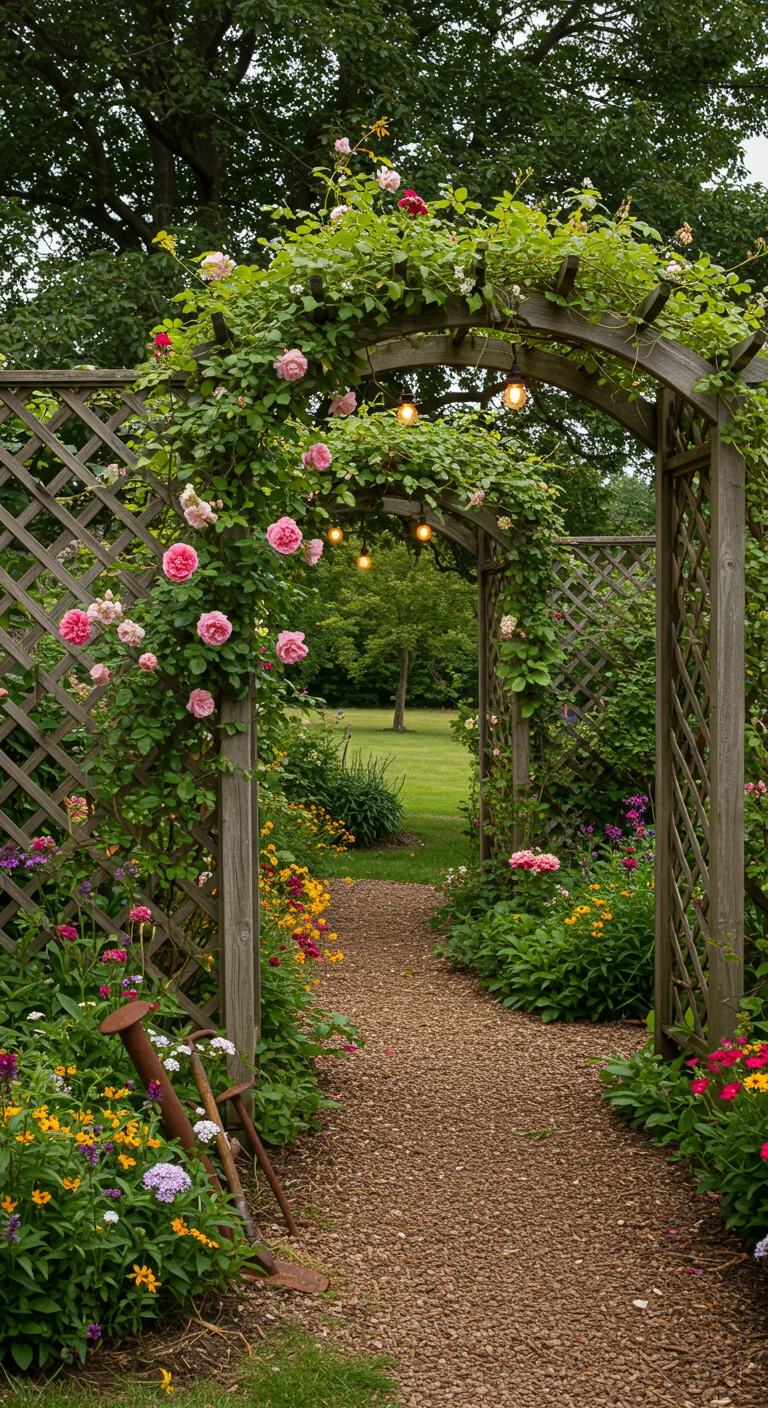
Trellises and arbors are essential elements for adding vertical charm and structure to your rustic garden. These architectural features serve not only as beautiful focal points but also as supports for climbing plants such as roses, clematis, and vines. When selecting a trellis or arbor, consider materials like weathered wood or wrought iron to enhance the rustic aesthetic. Position them strategically along pathways or entryways to draw the eye upward, creating an illusion of space and inviting exploration. You can also adorn them with string lights or seasonal decorations for a magical touch during evening hours. To maximize their impact, intertwine fragrant flowers or lush greenery that can cascade down, fostering a sense of tranquility and a connection with nature in your outdoor space.
9. Rustic Lighting: Illuminating Your Garden’s Character

Rustic lighting plays a crucial role in enhancing the charm and atmosphere of your garden, transforming it into a cozy retreat after sunset. Consider using vintage-style lanterns, string lights with warm bulbs, or solar-powered garden lights that evoke an old-world appeal. Incorporate materials like wrought iron, reclaimed wood, or mason jars to create fixtures that blend seamlessly with nature. Position these light sources along pathways, around seating areas, or near focal points such as water features or sculptures to guide the eye and create inviting spaces. By choosing the right rustic lighting, you not only illuminate your garden’s character but also extend its usability into the evening hours, perfect for gatherings or quiet moments under the stars.
10. Upcycled Decor: Transforming Junk into Garden Gems
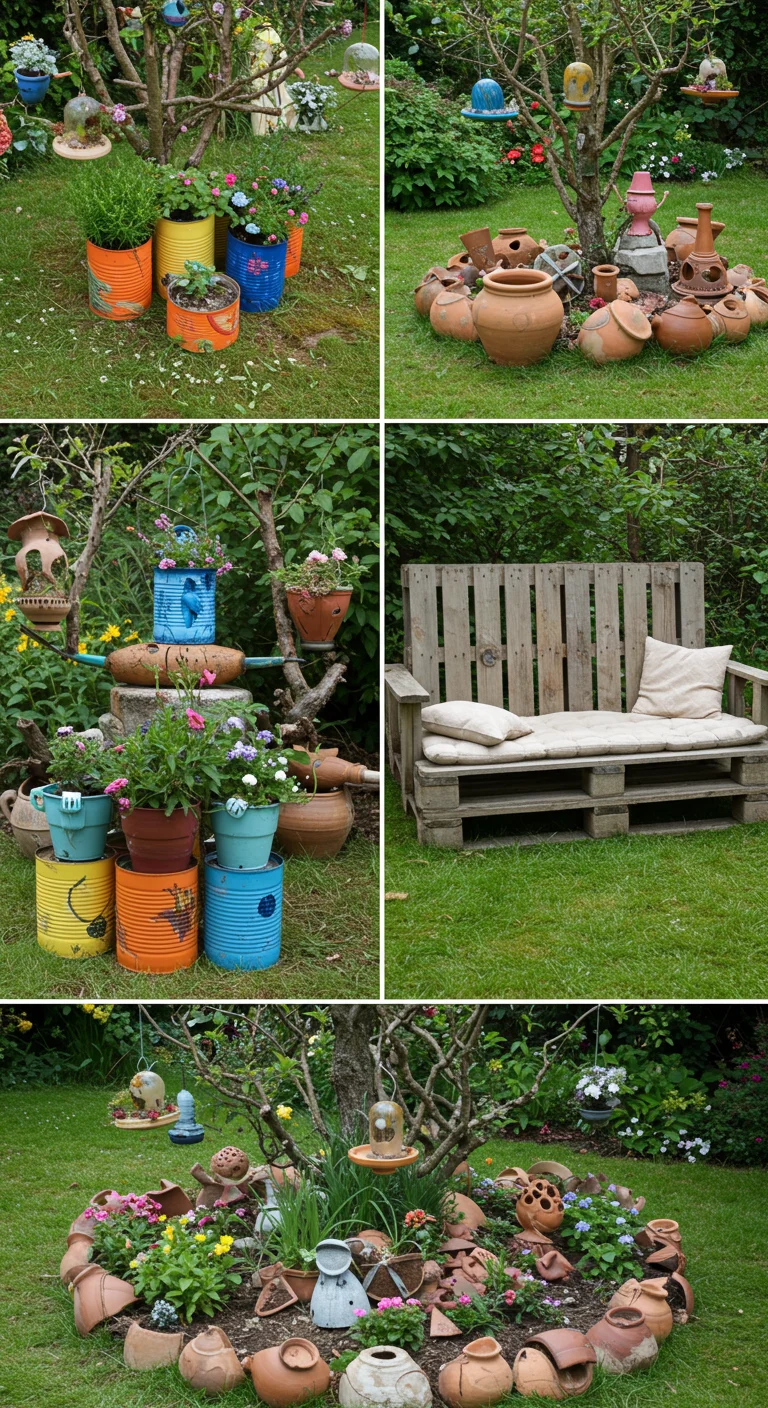
Upcycling is a creative and sustainable way to enhance your garden decor by repurposing items that might otherwise end up in a landfill. Consider using old wooden pallets to create rustic garden furniture, or transform tin cans into charming plant holders by painting them in vibrant colors. Broken pottery can be turned into unique garden sculptures, while glass bottles can serve as whimsical garden edges or bird feeders. Not only does upcycled decor add a personal touch and character to your outdoor space, but it also encourages eco-friendly practices. Engage your creativity by involving family and friends in the upcycling process, making it a fun and fulfilling project that results in one-of-a-kind garden gems that reflect your style and values.
11. Herb Gardens: A Rustic Approach to Culinary Freshness

Creating a rustic herb garden is an excellent way to bring freshness to your culinary adventures while embracing the beauty of nature. Start by selecting a sunny spot in your yard or on a balcony, where herbs like basil, thyme, rosemary, and mint can thrive. Using reclaimed wood or natural stone, build raised beds or simple planters to add a charming, rustic touch. Incorporate pathways made of gravel or stepping stones to provide easy access for harvesting. Consider companion planting with flowers like marigolds or nasturtiums to attract pollinators and enhance biodiversity. Regularly harvest your herbs to encourage growth and provide an ongoing supply for your kitchen, allowing you to elevate your dishes with homegrown flavors. With minimal maintenance, a rustic herb garden can become a delightful and functional centerpiece in your outdoor space.
12. Cozy Fire Pits: Gathering Around Nature’s Warmth
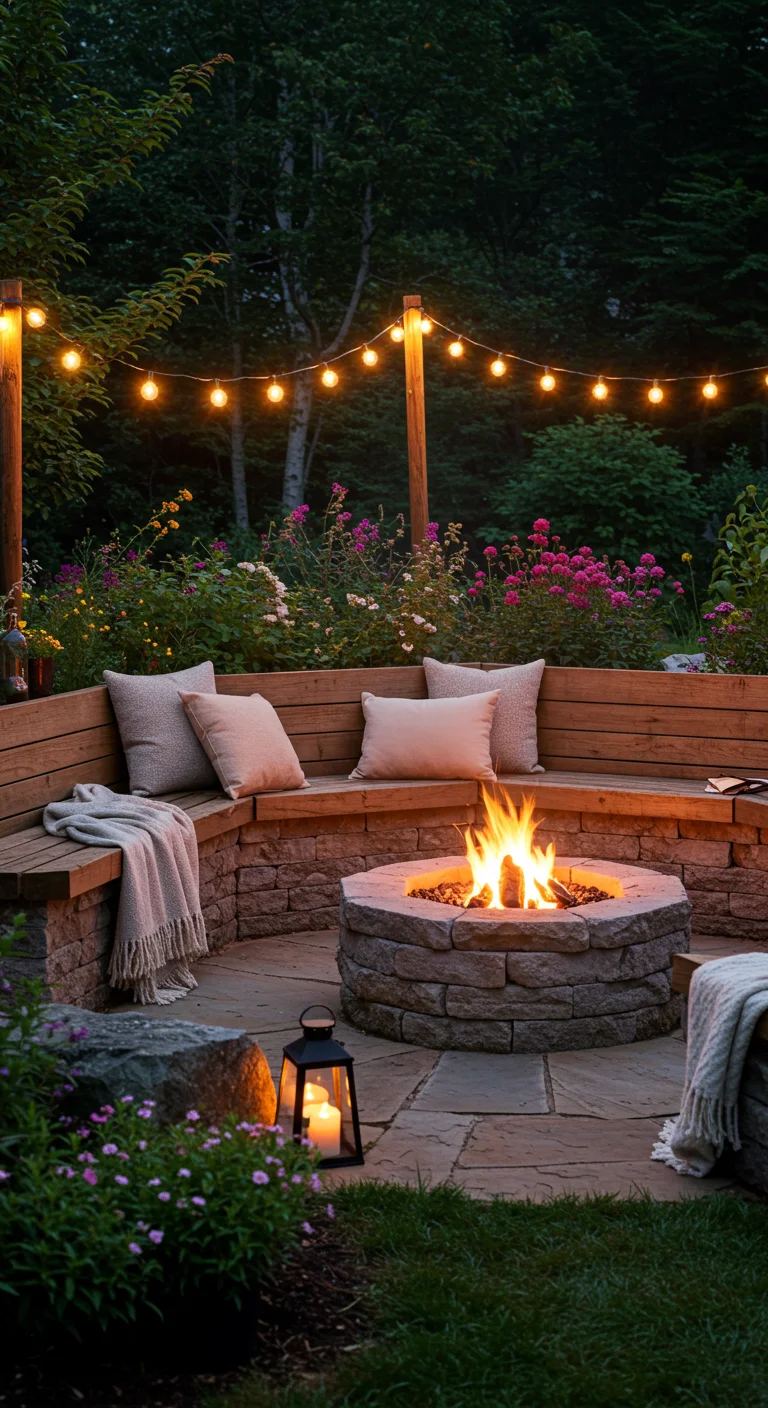
Cozy fire pits are the heart of rustic garden designs, bringing together family and friends under the stars while providing warmth and ambiance. To create a welcoming fire pit area, consider using natural materials such as stone or brick, which blend seamlessly with the outdoor environment. Surround the fire pit with comfortable seating options like wooden benches or woven chairs, adorned with soft cushions and throws for added coziness. Incorporate ambient lighting, such as string lights or lanterns, to enhance the atmosphere during evening gatherings. Additionally, think about including a nearby table for snacks and drinks, ensuring that your rustic fire pit area becomes an inviting retreat for socializing and relaxation in nature’s warmth.
13. Natural Mulch: The Underrated Beauty of Bark and Stone
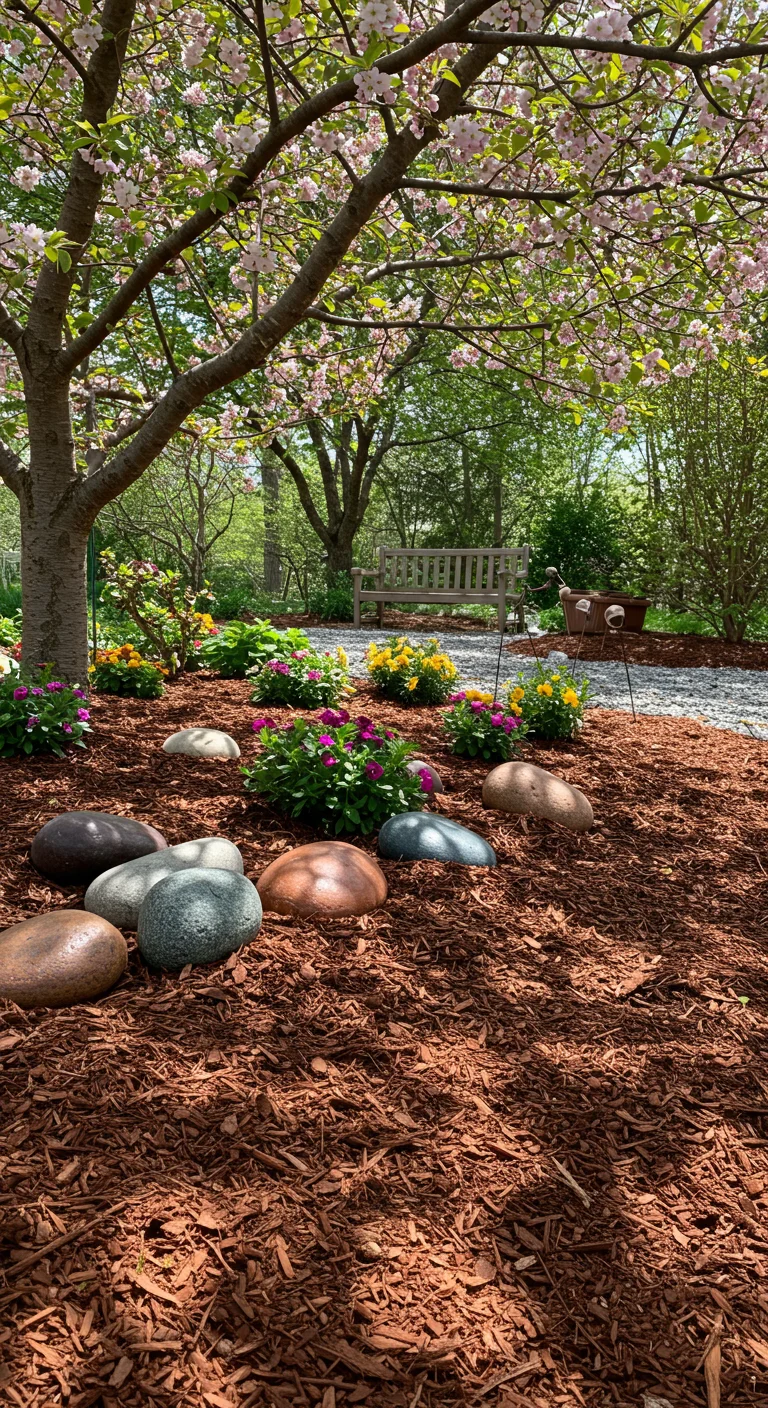
Natural mulch, particularly bark and stone, brings both beauty and functionality to rustic garden designs. Bark mulch not only enhances the aesthetic appeal of garden beds with its rich textures and earthy tones, but it also serves to retain soil moisture, suppress weeds, and gradually enrich the soil as it decomposes. Stone mulch, on the other hand, adds a rugged charm, is long-lasting, and provides excellent drainage, making it perfect for dry areas or rock gardens. When strategically layered around plants and pathways, these natural materials create a harmonious balance between nature and design, ensuring your garden remains vibrant and healthy while minimizing maintenance efforts. Experimenting with different sizes and colors can further enhance the visual impact, making your garden a true work of art.
14. Garden Art: Adding Personality with Rustic Crafts
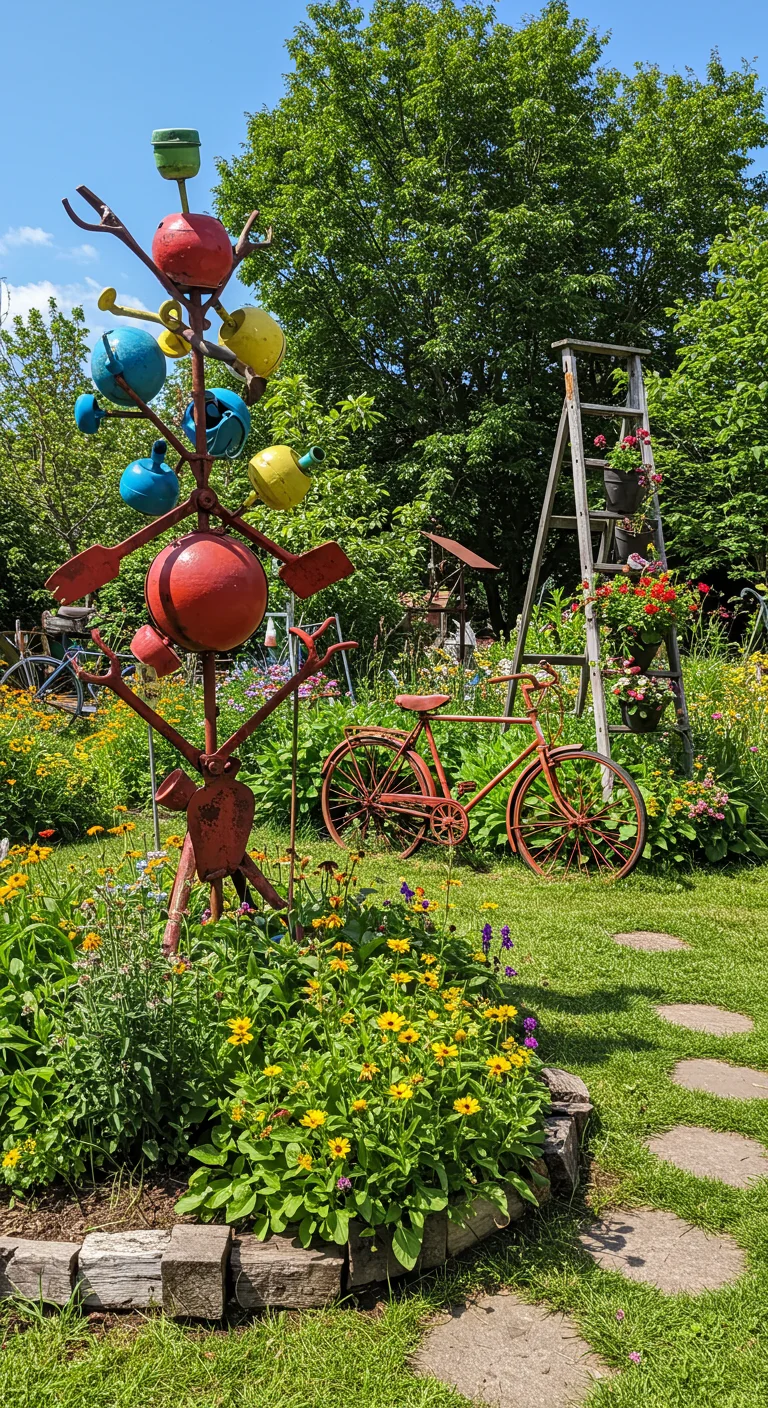
Incorporating garden art into your rustic garden design can infuse personality and charm into your outdoor space. Consider using reclaimed materials to create unique sculptures, wind chimes, or decorative stakes that reflect your style and values. Vintage items, such as old tools, bicycles, or wooden crates, can be repurposed into eye-catching focal points. Planting flowers in an old wheelbarrow or using a rustic ladder as a vertical garden can add dimension and interest. Additionally, handmade pottery or painted rocks can serve as whimsical accents that invite visitors to interact with your garden. Emphasizing natural textures and earthy colors will ensure that your garden art harmonizes with the surrounding landscape, creating a cohesive and inviting atmosphere.
15. Rustic Containers: Planters That Blend with Nature
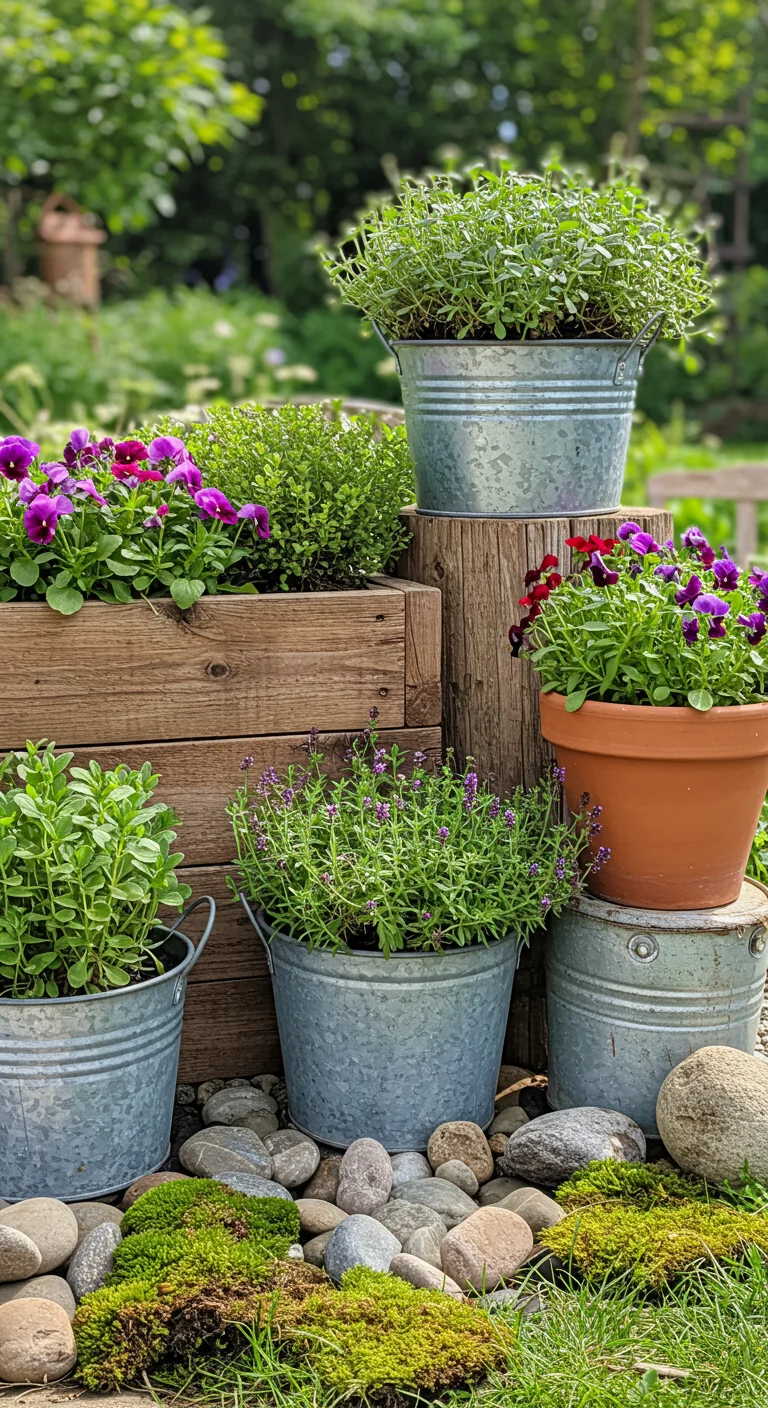
Rustic containers are essential for creating a harmonious garden that blends seamlessly with nature. Consider using materials like reclaimed wood, terracotta, or galvanized metal, which not only provide a weathered aesthetic but also complement the organic beauty of plants. To enhance visual interest, choose containers of varying heights and shapes, and fill them with a mix of vibrant flowers, lush greenery, or even herbs that thrive in your climate. Incorporating natural elements like stones or moss around the base can further enhance the rustic feel. Keep in mind that drainage is crucial, so ensure your containers have adequate holes to prevent waterlogging. This approach not only showcases your plants beautifully but also promotes healthy growth, making your garden a true reflection of the countryside charm.
16. Organic Gardening: Nurturing a Sustainable Landscape
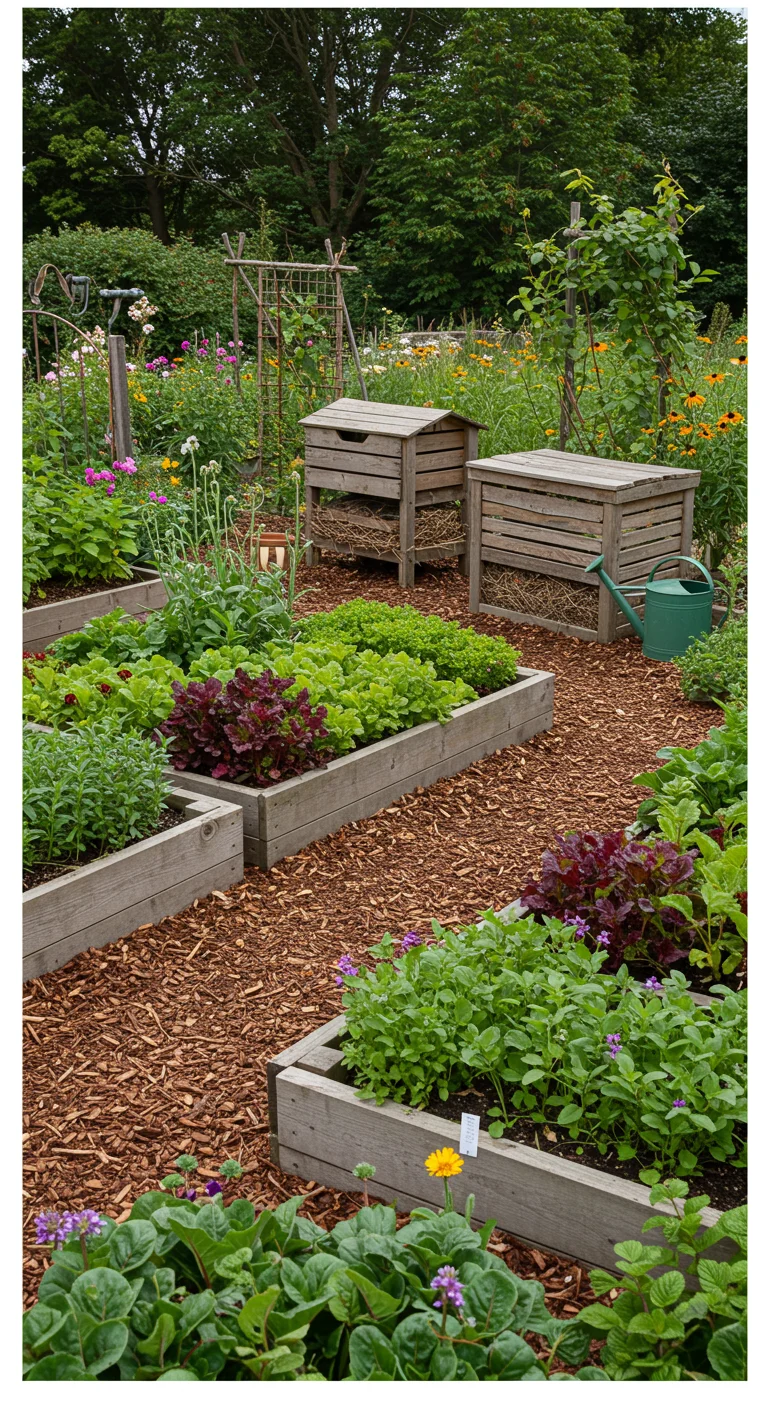
Organic gardening is a rewarding approach that emphasizes eco-friendly practices to create a sustainable landscape. By utilizing natural fertilizers, compost, and pest control methods, gardeners can cultivate healthy plants while preserving biodiversity. Incorporating native plants into your garden not only enhances the local ecosystem but also reduces water usage and maintenance needs. Companion planting, where specific plants are grown together for mutual benefit, can improve soil health and deter pests naturally. Mulching with organic materials helps retain moisture and suppress weeds, contributing to a thriving garden. Additionally, practicing crop rotation minimizes soil depletion and promotes nutrient-rich harvests. Embrace these organic techniques to foster a vibrant, sustainable garden that benefits both you and the environment.
17. Seasonal Decor: Embracing Change in Your Rustic Garden
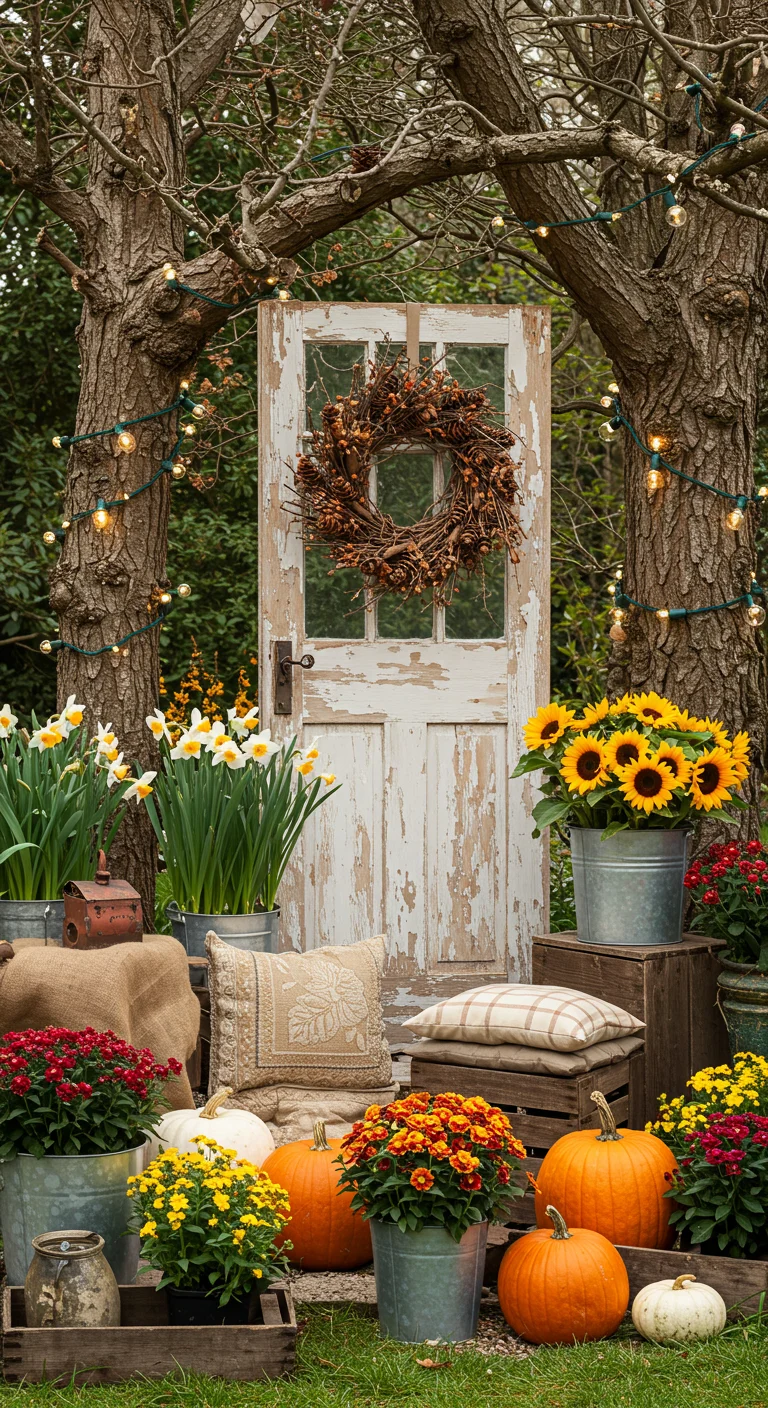
Seasonal decor can transform your rustic garden into a vibrant reflection of nature’s changing beauty. Start by incorporating seasonal plants; for spring, consider planting vibrant tulips and daffodils, while summer could feature sunflowers and zinnias. Autumn invites an array of pumpkins and colorful gourds, and winter can be celebrated with evergreen arrangements and twinkling lights. Additionally, utilize natural materials like burlap and wood to create decorative elements such as wreaths or garlands that harmonize with your garden’s aesthetic. Don’t forget to swap out garden accessories like cushions and throws to match the seasons, ensuring comfort while enhancing your garden’s charm. This practice not only keeps your space visually engaging but also deepens your connection with the rhythms of nature.
18. Cozy Seating Areas: Creating Outdoor Retreats
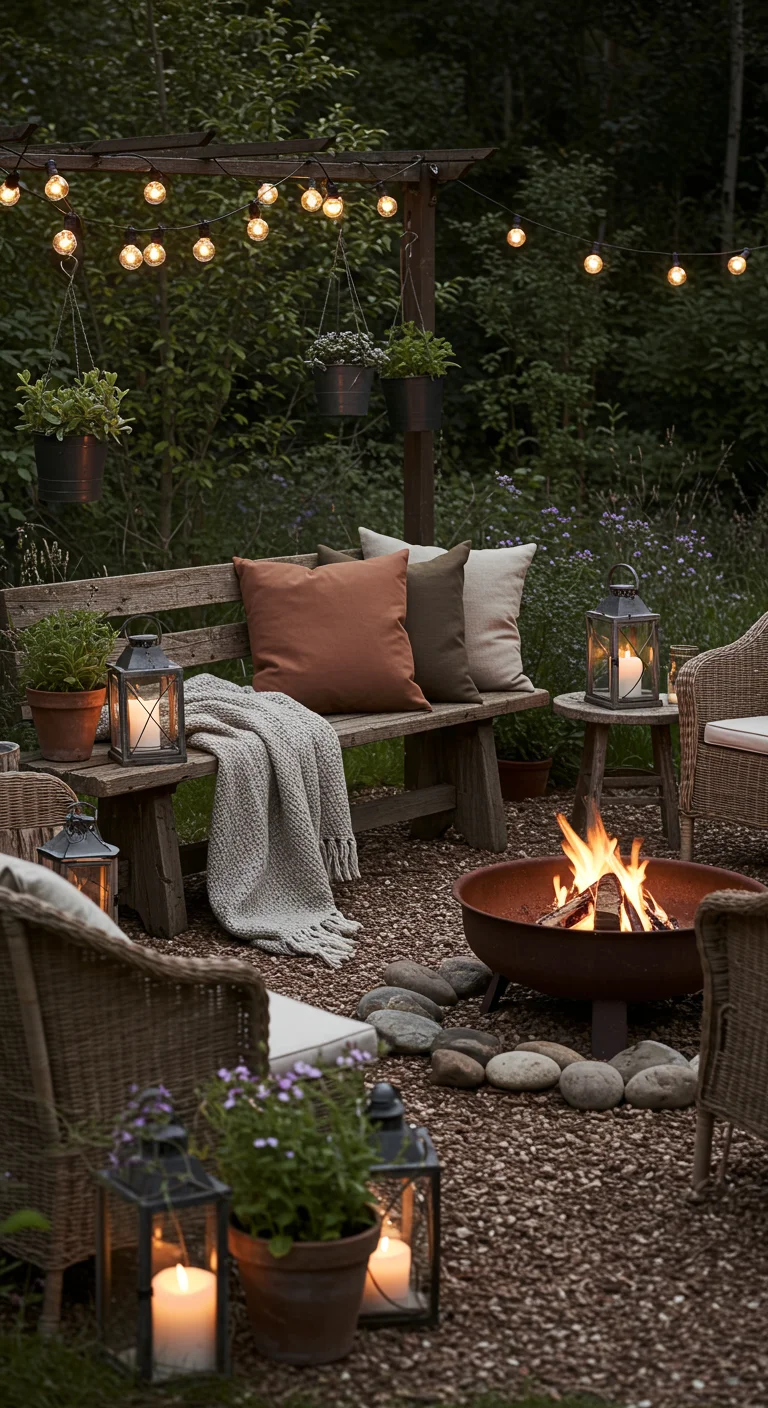
Cozy seating areas are essential for transforming your outdoor space into a serene retreat. To create an inviting atmosphere, consider incorporating rustic elements such as reclaimed wood benches, wicker chairs, or oversized cushions in earthy tones. Position your seating around a fire pit or a small outdoor table to encourage gatherings with family and friends. Enhance the coziness by adding string lights or lanterns overhead for soft lighting and incorporating potted plants or hanging herbs nearby to embrace nature. Don’t forget to include warm textiles like throw blankets and pillows to make the space more comfortable. By thoughtfully arranging your seating area, you can create a rustic nook that invites relaxation and enjoyment in your garden.
19. Birdhouses and Feeders: Welcoming Feathered Friends
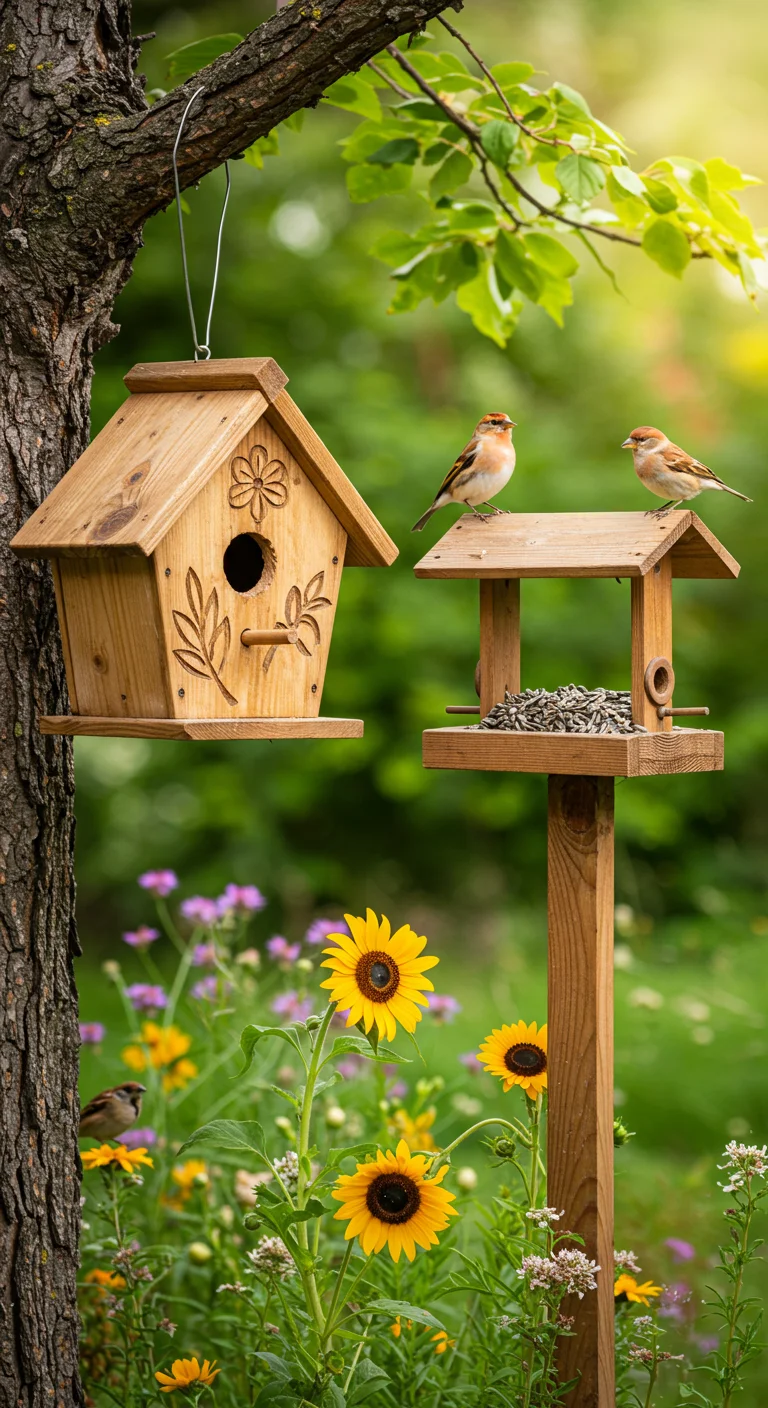
Creating birdhouses and feeders in your rustic garden is a delightful way to invite nature into your outdoor space. Choose natural materials like untreated wood or bamboo to construct or purchase birdhouses that blend seamlessly with the garden’s aesthetic. Position them in sheltered areas away from predators, ideally near trees or shrubs where birds feel secure. For feeders, opt for simple designs that are easy to clean and refill, and use seeds favored by local birds, such as sunflower seeds or nectar for hummingbirds. Regular maintenance, including cleaning and refilling, ensures that your feathered friends will return year after year, adding vibrancy and life to your garden. Consider incorporating decorative elements, such as rustic paint or carvings, to enhance the visual appeal while serving a functional purpose.
20. Native Plants: Enhancing Biodiversity in Rustic Spaces
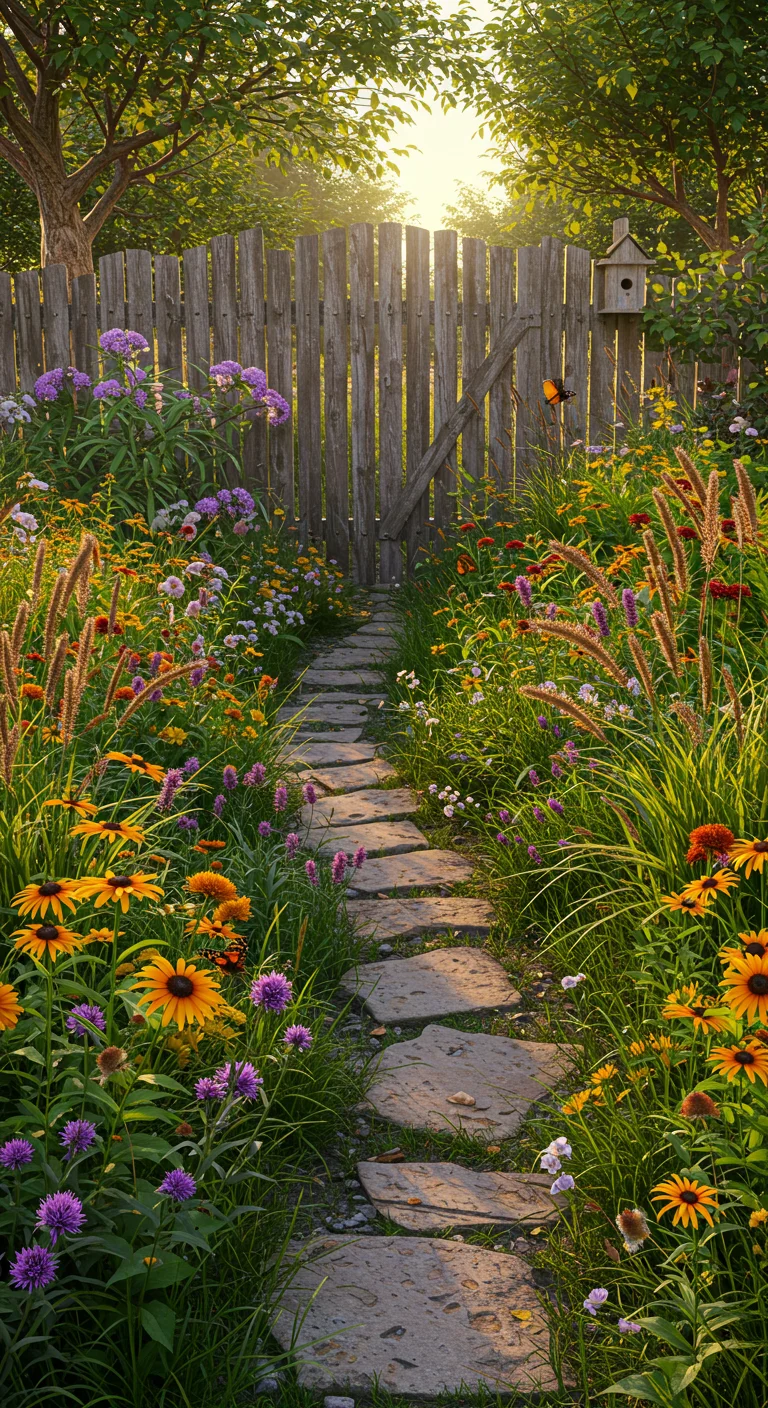
Incorporating native plants into rustic garden designs is a powerful way to enhance biodiversity and support local ecosystems. Native plants are adapted to the local climate and soil conditions, requiring less water and fewer chemicals, which makes them low-maintenance and environmentally friendly. They provide essential habitats and food sources for local wildlife, including birds, butterflies, and beneficial insects. To create a vibrant, sustainable rustic garden, consider a mix of native wildflowers, grasses, and shrubs that bloom at different times of the year. This approach not only enhances the aesthetic appeal of the garden but also fosters a thriving ecosystem, making your rustic space a sanctuary for nature and a haven for relaxation.
21. The Personal Touch: Adding Family Heirlooms to Your Garden
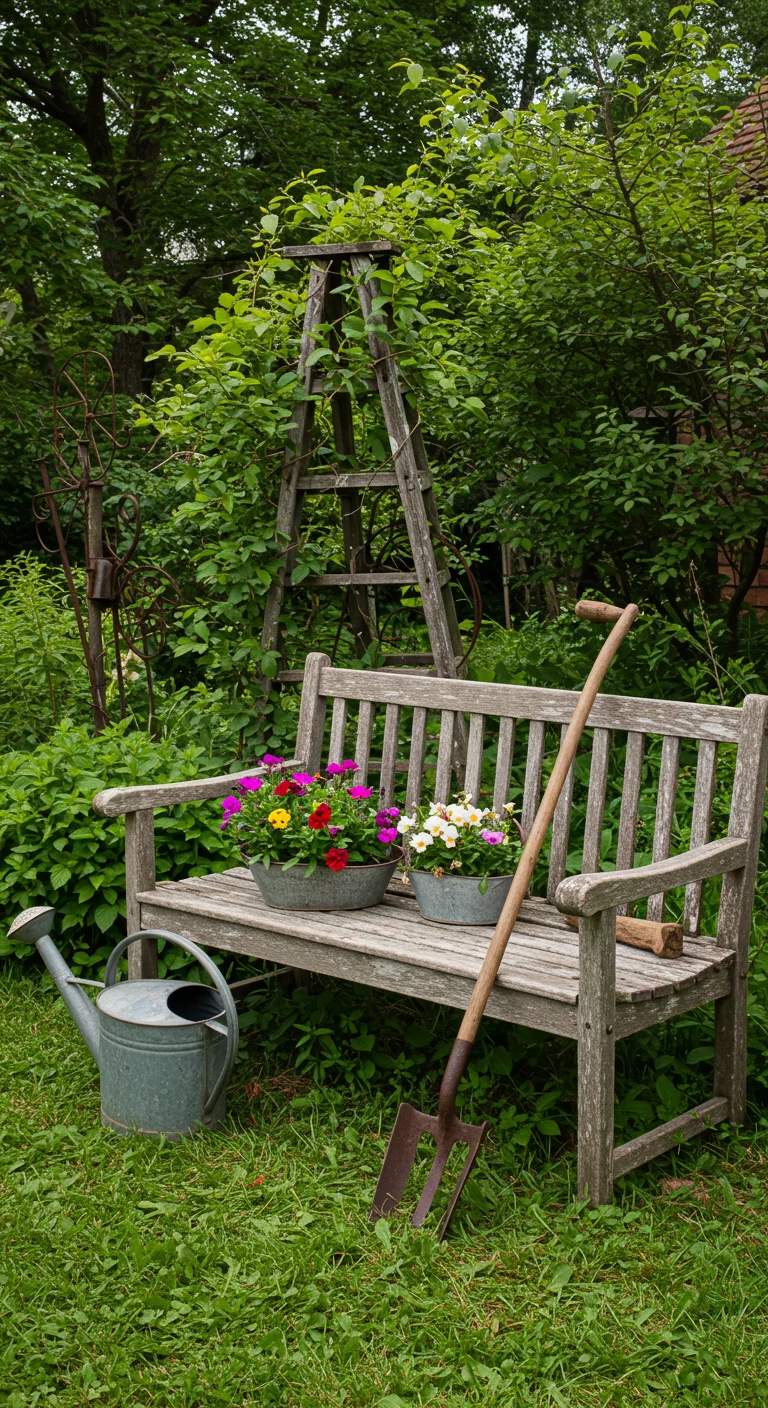
Incorporating family heirlooms into your garden design adds a personal touch and a rich history to the space. Consider using weathered wooden benches, vintage watering cans, or antique garden tools as focal points or functional decor. These items not only serve as conversation starters but also reflect the legacy of your family and their connection to nature. Planting around these heirlooms can enhance their visual appeal; for instance, surround an old wheelbarrow with vibrant flowers or use a rustic ladder as a trellis for climbing plants. This blend of nostalgia and nature creates a unique ambiance, making your garden a cherished family gathering spot while preserving memories for generations to come.

